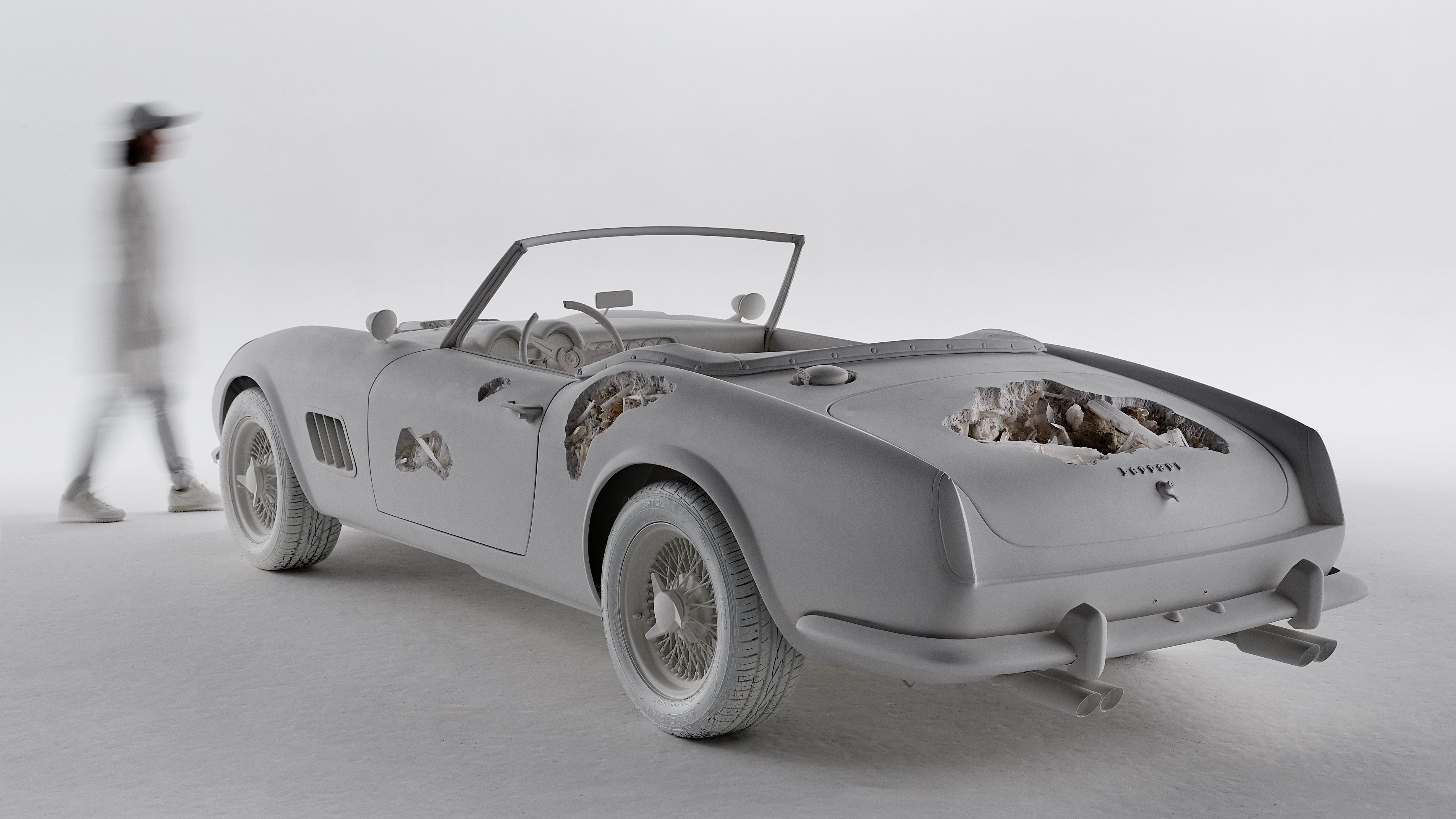Arsham Auto Motive (Capsule Review)


[Original publication: No Proscenium, 4/11/23]
The Petersen Automotive Museum is one of the world’s largest automotive museums. Previous exhibitions include The Porsche Effect, a stunning feature of the most significant Porsche models ever built, and Bond in Motion, the first official U.S. installation of original vehicles from the James Bond film franchise.
Get Laura Hess’s stories in your inbox
Join Medium for free to get updates from this writer.
SubscribeSubscribe
Petersen’s enthusiasm for cars isn’t limited to the street or screen. The museum currently hosts Arsham Auto Motive, an exhibit of “eroded” automotive artifacts by contemporary multimedia artist Daniel Arsham. The show includes model and full-scale vehicles, one of which is a restored, drivable, and unreasonably covetable Porsche 356 Speedster. Fiberglass casts of modern cars and automotive “remains” are presented as though fossilized; mineral crystals such as quartz and selenite emerge from gashes of deterioration. As described by Petersen, the works “occupy a space where the concepts of yesterday, today, and tomorrow collide.”
With his “Future Relic” aesthetic, Arsham has long explored fictional archaeology. His work is effective in part because there’s no false narrative for the objects; they aren’t depicted as genuine, historical artifacts (as opposed to Damien Hirst — well, sort of…). Rather, the meticulous sculptures are a meditation on time’s inevitability. In Arsham’s rendering, decay is beautiful, glamorous even. And yet, it still inspires existential creep through iconic cultural references.
A recreation of the 1961 Ferrari GT joyride from Ferris Bueller’s Day Off is stripped of its defining cherry gloss and reimagined in a matte buttery cream. There’s a flatness in the paint’s uniformity that reduces the car to its most essential form while elevating it to an ultimate silhouette. Color uniformity and monochrome are core tenets of Arsham’s work. He was born with deuteranopia, colorblindness of red and green tones, and can see roughly 20 percent of the colors and shades a person can generally distinguish. For decades, his work has been in black, white, and gray scale, with a focus on texture and shape. In 2015, with new access to specialized glasses, Arsham could experience a fuller color spectrum. His art began incorporating saturated blues, purples, and pinks.
Arsham Auto Motive is yet another departure. The majority of the show is a delicate palette of Easter pastels in pink, blue, and yellow — the antithesis of rot and decline. The subtlety draws attention to the sculptures’ deterioration as a kind of honorarium. In addition to crystals, Arsham works with volcanic ash, a material that embodies geological destruction. And although volcanic ash can corrode and destroy, it can also be a fertile, nutrient-rich resource. The resulting contrast is both distressing and serene. It’s reminiscent of a line from Ovid’s poem Metamorphoses: “Everything changes, nothing is lost.”